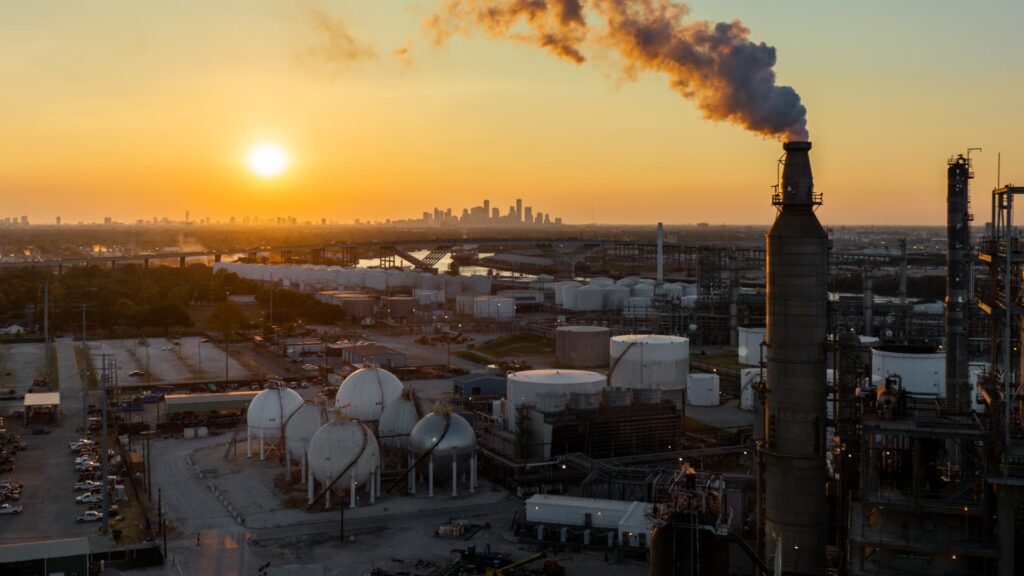
Mounting geopolitical tensions stemming from conflict in the Middle East and Eastern Europe have helped drive oil prices to five month highs, challenging the Federal Reserve’s fight against inflation. U.S. crude oil gained 4.5% this week, touching $87 a barrel on Friday before settling at $86.91. Prices at the pump have followed crude higher to $3.58 per gallon on average, the most expensive since October, according to American Automobile Association data. West Texas Intermediate is up 21% for the year, Brent has gained 18% and gasoline futures have outstripped both with a gain of 32%. @CL.1 6M mountain WTI Crude Oil, 6 months “You’re going see headline inflation respond to it, and that ultimately means it’ll make the Fed’s job a little harder,” said Bart Melek, managing director of global commodity strategy at TD Securities. Rising energy prices may affect the timing or magnitude of interest rate cuts, he said. The Federal Reserve is focused on bringing down core inflation, which excludes volatile energy and food prices. The next reading on consumer prices comes Wednesday when March figures are released. But central bank policymakers aside, the reality is consumers mostly feel inflation at the grocery store and gas station, said Andy Lipow, president of Lipow Oil Associates. “[H]igher energy prices cause inflation and in spite of everyone telling me that the Fed’s measures are excluding food and energy, that’s what people buy every day,” Lipow said. Summerlike gasoline demand Bob Yawger, energy futures strategist at Mizuho Americas, expects gas prices will continue to rise between now and Memorial Day weekend. Gasoline demand has been strong at 9 million barrels per day with repeated drawdowns in U.S. fuel stockpiles in eight of the past nine weeks, Yawger said. “That’s like a summertime number and we’re still a good seven weeks away from the Memorial Day start to driving season,” Yawger said of the latest demand figures. Surging consumption has pushed oil refining stocks such as Valero , Philips 66 and Marathon Petroleum to at all-time highs. Marathon has climbed 48% since the start of the year, Valero by 41% and Philips by 29%. “There are investors out there that think the refiners are going to book good profit moving forward from here,” Yawger said. “All indicators are that gasoline is going to be higher in the relatively near future,” juiced by strong driver demand, leaving “the refiner equities ripping to the moon.” Iran-Israel tensions, Ukraine strikes The oil rally comes as geopolitical tension haunts the market. OPEC member Iran has vowed retaliation against Israel, holding the Netanyahu government responsible for a missile strike on its consulate in Damascus that killed two of the Islamic Republic’s top generals . “If Iran retaliates with direct involvement, prices are bound to spike. Basically, we are a missile away from $90 oil,” said Manish Raj, managing director of Velandera Energy Partners. Meanwhile, 14 months after the war began, Ukraine has shown no intention of letting up on its drone attacks against Russian energy infrastructure, striking the country’s third-largest oil refinery last week. Kyiv has hit 18 refineries so far this year, resulting in an estimated 670,000 barrels per day of Russia’s refining capacity going offline, according to a JPMorgan estimate. The strikes reportedly have the White House worried, with the Biden administration privately telling Kyiv to stop hitting Russian energy infrastructure due to the potential impact on oil prices, three sources familiar with the discussions told The Financial Times in late March. “The Ukrainian strikes against Russian infrastructure really registered with the market,” said John Kilduff, founding partner with Again Capital. Kyiv has “damaged refining infrastructure in Russia and other infrastructure and it has impacted their production capacity,” he said. “For the first time since this war started, we may end up finally having material amounts of Russian supply off the market,” Kilduff said. Ukraine is “just not stopping, despite the Biden administration asking them to knock it off.” Raj with Velandera Energy Partners said the Ukrainian strikes on Russian refineries are contributing to the runup in gasoline, and in particular diesel, prices rather than crude oil. “Without a doubt, the Biden administration does not want any damages to any of Russia’s infrastructure, whether it’s crude oil production, whether it’s refineries, because [Western] consumers will get affected by damage to refineries.” Escalating attacks are coming against a backdrop of an already tightening global crude market. Economic growth, a proxy for crude oil demand, is stronger at the same time as some OPEC+ members are voluntarily slashing production by 2.2 million barrels per day. Bank of America expects a supply deficit of 450,000 barrels per day through the third quarter. Melek noted, however, that OPEC leader Saudi Arabia doesn’t have an interest in prices moving too high, which stifles demand and risks encouraging U.S. shale producers to grab more market share. Saudi Arabia has 3 million barrels per day of spare capacity it can deploy if prices keep rallying. If prices fail to pull back, “there’ll be White House pressure on the Saudis to step it up a little,” Melek said.






